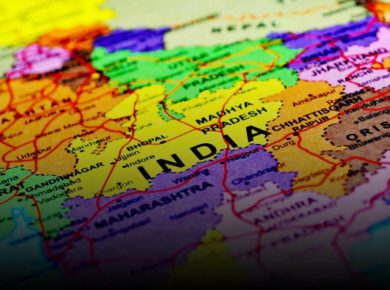Green Revolution in India
To reduce the dependence of India on foreign aids for supply for good grains during the agricultural crises like droughts, floods etc. and envisaged to make India self-dependent and self-sustained nation in terms of food grains availability.
Prevailing Conditions before the introduction of Green Revolution
- The focus for Indian agriculture was only on institutional reforms, not on the technological base
- Rising population & huge outlays towards planned industrialization put long term pressures on Indian agriculture which resulted in massive demand.
- To meet food shortage, India was forced to import food in greater amount.
- Two wars, one with China (1962) and another with Pak (1965) and successive drought in years 1965– 1966, led to fall in agriculture output massively. Food prices shot up.
- USA due to India’s stand on Vietnam & India’s denial of accepting an economy policy package – sent inferior quality seeds during shortage of food, under PL-480 Scheme
- Due to the grim Scenario of 1960’s, economic self-reliance & food self-sufficiency became top priority objectives of Indian leadership.
Government’s positive initiative during Green Revolution Period
- Government investment in agriculture rose significantly.
- Institutional finance in agriculture sector doubled from 1968 to 1973.
- Agricultural price commission was set up & efforts were made to assure sustained remunerative price to farmers.
- Public investment, institutional credit remunerative prices & availability of the new technology for farmers.
- The result of government’s initiative was that the rate of increase in the gross irrigated area rose from 1 million hectares per annum in Pre Green Revolution to about 2.5 million hectares per annum during the 1970s.
Positive impact of Green Revolution
Food grain production rose significantly. By 1980’s not only was India self-sufficient in food, but also it was exporting food to pay back its earlier loans and to loan to deficit countries.
- Maintained the agricultural growth rates plus it generated a rapid increase in the marketable surplus of food grains
- The liberation from dependence on PL–480 or other imports for food security
- Small farmers applied more inputs per unit of land compared to large farmers to get maximum results
- Small farmers became more viable and did not sell out their land to large land holding farmers in distress.
- Not only generated employment in agriculture but also non-agricultural rural & semi-urban employment through the development of agro industries, transport industry, and other agriculturally allied sectors.
- Increase in income of farmers led to the demand for factory produced consumer durables like radios, watches, TVS, Sewing machines etc.
- Surplus stocks of food-grain helped government to launch employment generating and poverty alleviation programmes in backward areas.
Green Revolution had a major impact on rural poverty level which declined sharply through food availability, & resulted in decline in relative prices of food, generating employment in agricultural sector & agriculturally allied areas.
Negative impacts of the Green Revolution
Huge disparity and polarization between classes & regions resulted in favourable conditions for left wing org. to organise the poor peasants into Left Wing Extremism for their rights
- Excessive use of chemical fertilizers and pesticides.
- Led to plateauing of the growth rates in areas like Punjab & Haryana.
- Excessive withdrawal of groundwater for irrigation without adequate recharging of the sub soil aquifers.
- Tenants and share croppers who did not have security of tenure were perhaps the only losers.
- Rise in feeling of regionalism divided the nation on developing & backward states.
To appease the Farming Community in Green Revolution belt, many political parties provided electrical power with subsidy or totally free which led to misuse of it and adversely affected the overall health of Indian economy.













1 comment
Nice article, useful information shared thanks.